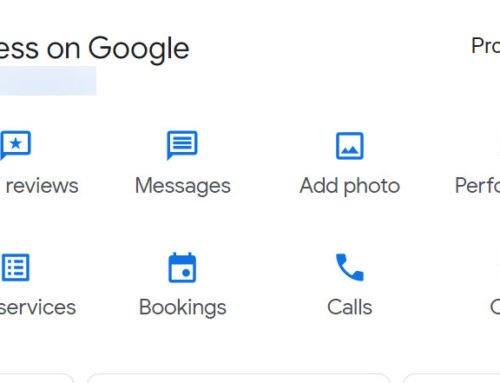Responding to Negative Reviews
In a digital world that is driven by opinions and feedback, negative reviews are inevitable. BrightLocal’s recent survey on the topic shows that 32% of customers have written negative reviews, and that number will continue to rise. A notable difference between a good business and a bad one is how they react to the criticism. 5th Gear Marketing creates opportunities to learn how to respond to negative reviews and works with clients to adjust services to negate additional negativity.
Despite the uncomfortable connotation associated with “negative”, we often don’t realize that customers who drop negative reviews usually have good intentions. Most of the time, critical feedback is aimed at fellow consumers, and not the business itself. Some motivations for leaving negative reviews include:
- Helping others make better decisions when purchasing a product or service
- Wanting to feel recognized by the consumer community
- To help the business change for the better through personal feedback
Contrary to popular belief, reviewers are usually not looking to take you and your business down. Consumers value not just quality products, but a quality experience. They want to make sure you care about this as well.
Feedback is a two-way street. The weight of the customer’s opinion is just as important as the business’s response. With this said, the better you understand how to respond to negative reviews, the more you can use these crucial moments to your advantage. You can turn a negative review into an opportunity to connect with your customers on a deeper level, showcase your professionalism, and a way to make your business better.
Uh oh, you’ve received a negative review. What’s next?
At first glance, a negative review can send a business owner into distress. Take a deep breath, because being in this mindset can cause you to become defensive, which will lead to a poor response. To break the cycle of feeling frustrated and upset every time a negative review comes in, it is important to have a game plan. At 5th Gear Marketing, we know what works. Here are some tips we’ve come up with to help:
1) Read to understand the feedback
Take a step back from the situation and avoid pressing the panic button. Read the review in detail to determine if the person who left the review has a legitimate concern. If so, see this as an opportunity to grow and improve your business so that ultimately the concern does not become repeated. Negative reviews are often a great way to turn things around and win back a customer that was once dissatisfied.
Sometimes, a negative review is a response to a small miscommunication, such as an updated food menu or different hours of operation. It is important to take the time to follow up with the customer directly so that you can earn back their loyalty.
2) Evaluate the information within the review
Before crafting a response to a negative review, you need to first see whether or not the reviewer uses a constructive tone and has a valid point. Scan the review for anything that may violate review platform policies. Popular sites like Yelp and Google prohibit any offensive language, harassment, negative feedback from former employees, conflicts of interest, and violations of privacy.
In an effort to keep reviews as unbiased as possible, platforms such as Yelp and Google typically do not allow business owners to pay to remove negative feedback from reviewers. However, any violations (such as the ones listed above) may be grounds for removal. On most sites, you can flag or report a review to have them reviewed and removed, if necessary. Additionally, if the review touches on a legal issue, contact your legal team for the next steps to ensure the problem is handled properly.
3) Decide on the right response strategy
Once you have thoroughly read the review and confirmed that the reviewer has a legitimate concern, makes a clear and valid point, and doesn’t violate any review platform policies, it is time to figure out which response strategy to choose. The response should be both proactive and empathetic. Generally speaking, you want to acknowledge both the issue at hand and any positive feedback. Apologize, if needed. Then, you should communicate your desire and commitment to make things right and provide additional contact information should the reviewer choose to follow up offline.
How to get more positive reviews
More often than not, businesses report that the bad reviews they receive online are outnumbered by the positive feedback from customers received directly. This is normal, and we can tell you why. When a customer is dissatisfied with a product or service, they talk about it with others and usually leave a bad review. When a customer has a good experience, they are less likely to leave a positive review since this is something that is expected. Because of the nature of posting reviews, burying bad reviews with good ones is an effective way to cover up any negativity your business receives online. To receive more positive reviews, it is important to suggest customers leave reviews after they’ve had a good experience.
The use of QR codes are an effective method to link directly to the platforms you seek reviews on. Compliment the QR code by using a bit.ly or other link tracking software to quantify the number of times the QR code is scanned, allowing you to better place the QR codes around your location to obtain the most reviews.
Respond to all reviews!
The nature of Google’s algorithm shows that a business’s reply to a review can boost relevance. Reviews are believed to be roughly 16% of the local ranking factors, so responding to those reviews is definitely worth the effort! This applies to both positive and negative reviews, so it is imperative that you respond to both the negative and positive reviews to ensure that the bad reviews don’t end up on top. Even if the review is older, do not hesitate to thank the reviewer for their comments and let them know you look forward to seeing them again soon.
So, what’s the takeaway?
By taking the time to learn and understand why customers leave negative reviews, you can better respond to them. This will better your business’s reputation online, strengthen your relationships with your customer, and give you some insight on how your business can better operate to serve their needs. Responding to reviews will help your search rankings, as well! Positive reviews matter just as much as the negative ones, so thank customers who leave positive feedback and encourage others to do the same. When a negative review inevitably comes around, you now know how to fix the situation to keep loyal customers coming back.






